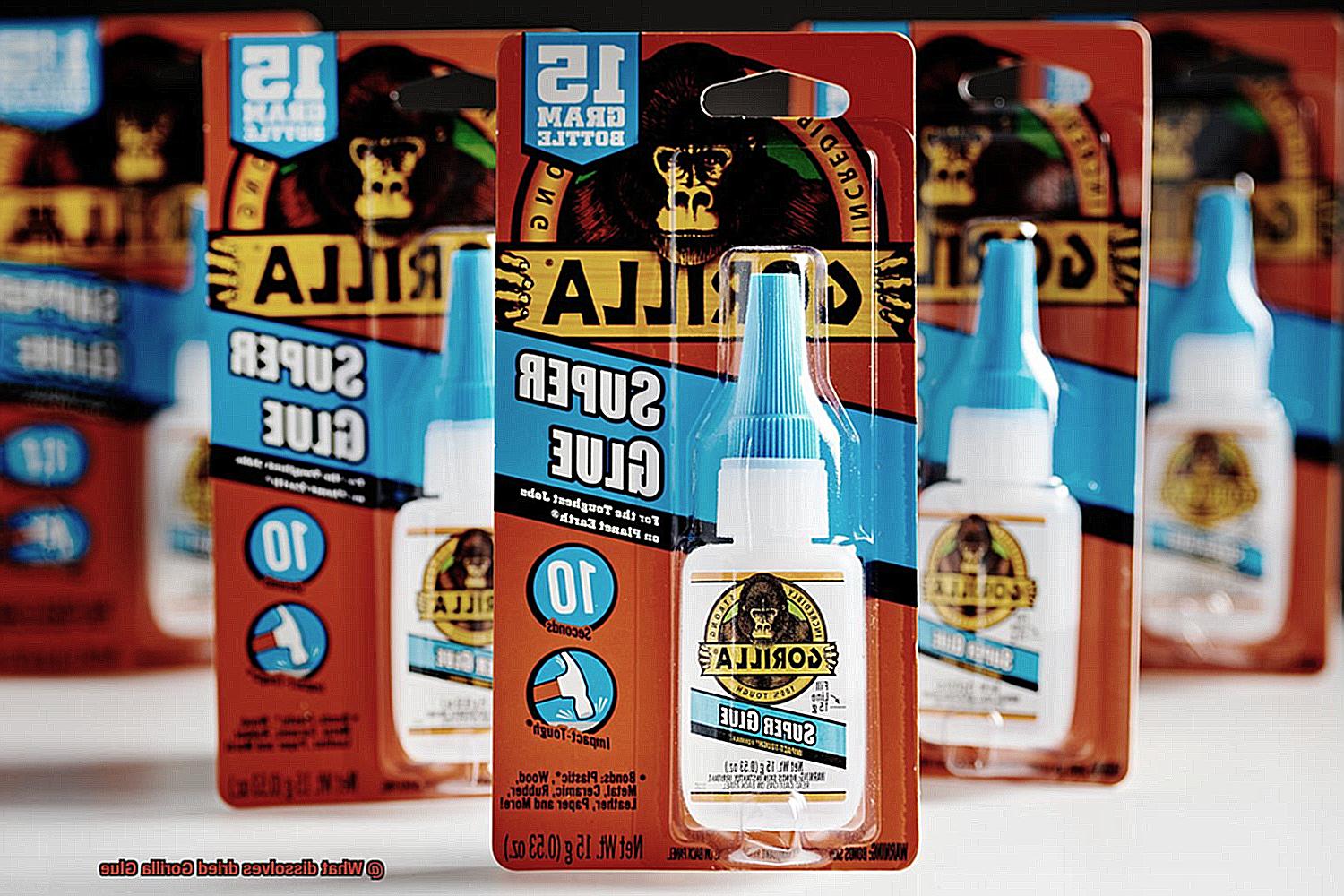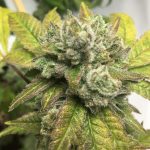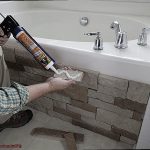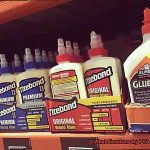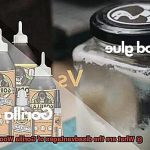Ever found yourself in a sticky situation? I’m not talking about metaphorical messes, but literal ones. Imagine this: you’re knee-deep in a DIY project when, out of nowhere, dried Gorilla Glue decides to play its adhesive tricks and sticks your fingers together. Cue panic mode as you frantically wonder how on earth you’ll break free from this gluey predicament. But fear not. We’ve got your back and we’re ready to spill the beans on what dissolves dried Gorilla Glue.
When it comes to sheer strength, Gorilla Glue is the undisputed champion. Its bond is so powerful that it’s become a favorite among amateurs and pros alike. But sometimes, its strength can turn against us, leaving us desperately searching for an escape route.
In this blog post, we’re diving deep into the fascinating world of Gorilla Glue and exploring the potential solvents that can save the day. From everyday household remedies to specialized products, we’re revealing the secrets to breaking down and releasing the grip of dried Gorilla Glue.
Discover how heat and time can team up to loosen this formidable adhesive’s hold. Witness the battle between acetone and other solvents as they go head-to-head with Gorilla Glue’s stubborn bond. And get ready for some insider tips and tricks that could save your skin (and fingers) from future glue-related mishaps.
So whether you’ve innocently glued your fingers together or you’re just curious about the powers of adhesives, buckle up because we’re taking you on a captivating journey through what dissolves dried Gorilla Glue. Your next project might be just one solvent away from getting back on track.
What are the Properties of Gorilla Glue?
Contents
- 1 What are the Properties of Gorilla Glue?
- 2 How to Dissolve Dried Gorilla Glue with Acetone
- 3 How to Dissolve Dried Gorilla Glue with Isopropyl Alcohol
- 4 How to Dissolve Dried Gorilla Glue with Heat
- 5 Adhesive Removers for Dissolving Dried Gorilla Glue
- 6 Safety Precautions When Dissolving Dried Gorilla Glue
- 7 Testing Solvents Before Use
- 8 Common Mistakes to Avoid when Dissolving Dried Gorilla Glue
- 9 Conclusion
Prepare to be amazed by the extraordinary properties of Gorilla Glue, the adhesive that has taken the market by storm. With its polyurethane-based formula, this versatile glue boasts a unique set of characteristics that make it the go-to choice for countless applications.
Get ready to explore its unparalleled strength, expanding wonder, water resistance, and compatibility with a wide range of materials in this comprehensive guide to Gorilla Glue’s properties.
Unrivaled Strength:
Prepare for a bond that can withstand the test of time. Gorilla Glue dries to form an unbreakable connection, capable of bearing heavy loads and resisting impacts. Whether you’re mending furniture, constructing a masterpiece, or diving into a thrilling DIY project, Gorilla Glue guarantees a bond that will endure.
Expanding Marvel:
Watch in awe as Gorilla Glue unleashes its expanding superpower during the curing process. When exposed to moisture, this extraordinary glue expands and fills gaps and voids in the materials being bonded. The result? A bond that not only defies expectations but also maximizes contact between the adhesive and surfaces, creating a connection that is nothing short of invincible.
Defying Water:
Don’t let water dampen your spirits; let Gorilla Glue rise above it all. This adhesive is built to withstand water exposure without compromising its effectiveness. From indoor to outdoor applications, even in moisture-laden or humid environments, Gorilla Glue remains steadfast. However, it’s important to note that prolonged exposure to water may gradually weaken the bond over time. To ensure lasting results, protect glued surfaces from excessive moisture whenever possible.
Versatility Unleashed:
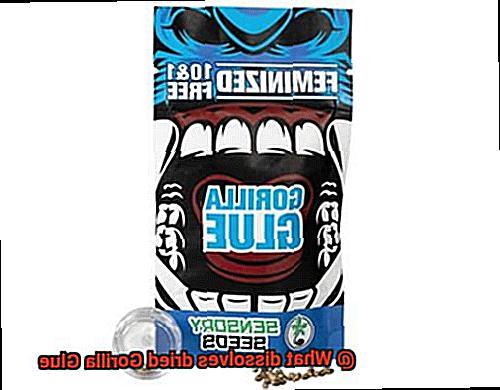
Gorilla Glue’s compatibility knows no bounds. It fearlessly adheres to an extensive range of surfaces, embracing wood, metal, stone, ceramic, foam, glass, and more. This adhesive’s versatility makes it the ultimate choice for an array of projects and repairs around your home or workshop.
To ensure compatibility and desired outcomes, always test the glue on a small, inconspicuous area before applying it to the entire surface.
How to Dissolve Dried Gorilla Glue with Acetone
Fear not, as we have the perfect solution for you. In this guide, we will walk you through the process of using acetone, a powerful solvent, to dissolve dried Gorilla Glue. With just a few straightforward steps, you can bid farewell to that stubborn adhesive and restore your surface to its former glory.
Step 1: Gather Your Materials
Before embarking on the glue-removal journey, ensure that you have all the necessary materials at hand. These include acetone (found in nail polish removers or hardware stores), a clean cloth or sponge, and a small container.
Step 2: Apply Acetone to the Glue
Begin by pouring a small amount of acetone into the container. Immerse the cloth or sponge in the acetone, ensuring it is fully saturated but not dripping excessively.
Step 3: Dab and Allow Time
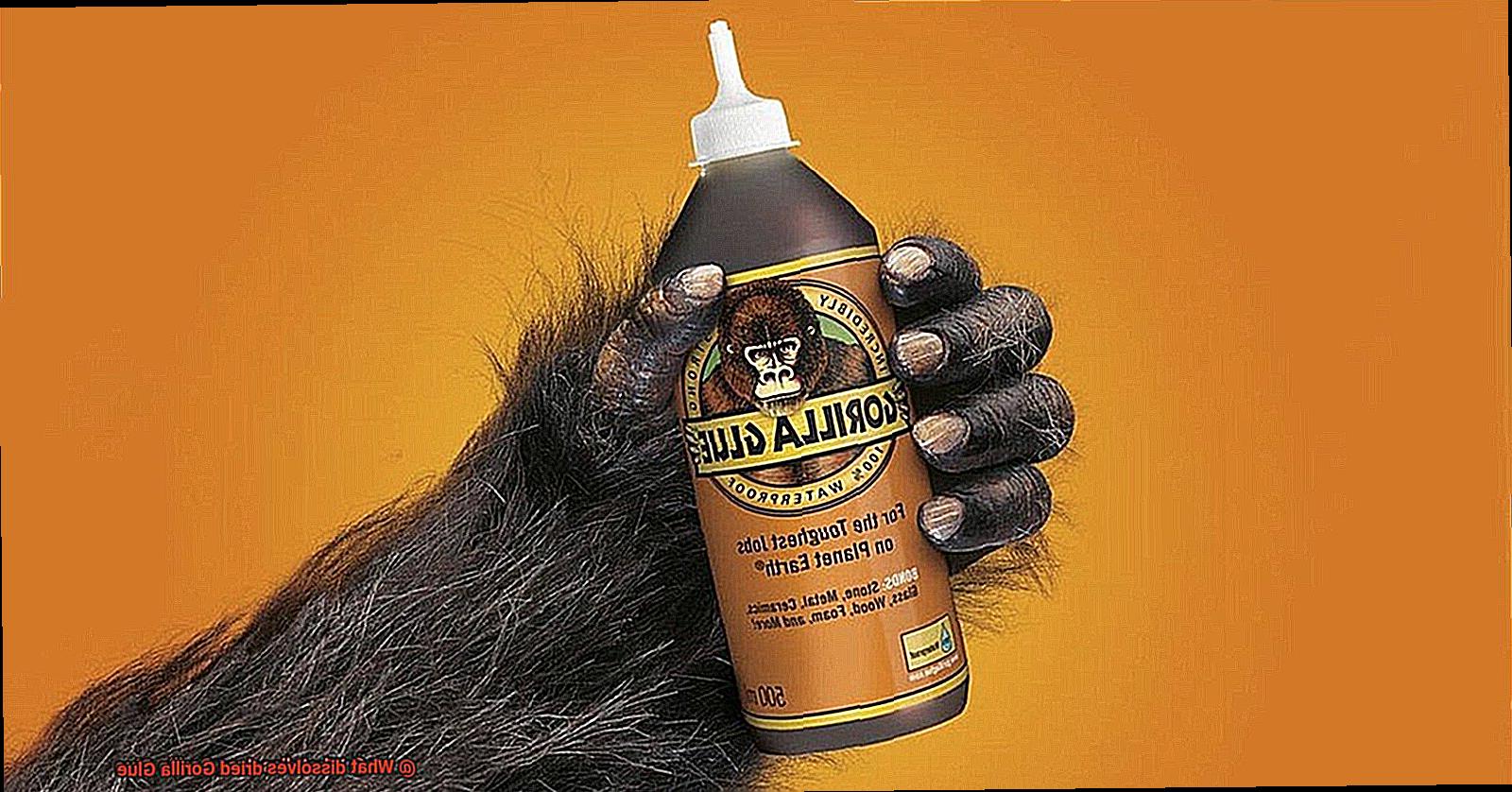
Delicately dab the acetone-soaked cloth or sponge onto the dried Gorilla Glue. Apply gentle pressure and allow the acetone to work its magic. Patience is key here, as it may take a few minutes for the solvent to penetrate and dissolve the adhesive.
Step 4: Rub and Scrape
After giving the acetone time to work its wonders, commence gently rubbing or scraping the dissolved glue using the cloth or sponge. Take care not to cause any damage to the underlying surface. Should remnants of the glue persist, repeat steps 3 and 4 until all traces of dried Gorilla Glue have been eradicated.
Step 5: Clean Up
Once you have successfully dissolved and removed the glue, it is essential to thoroughly cleanse the area with soap and water. This step ensures the elimination of any remaining residue or acetone, leaving behind a pristine surface.
How to Dissolve Dried Gorilla Glue with Isopropyl Alcohol
When it comes to removing dried Gorilla Glue, isopropyl alcohol, also known as rubbing alcohol, is a powerful solution. This common household solvent can effectively dissolve the strong bonds of Gorilla Glue and restore your surfaces. In this article, we will guide you through the step-by-step process of using isopropyl alcohol to remove dried Gorilla Glue.
Gather the Materials:
Before starting, gather all the necessary materials. You will need isopropyl alcohol, a clean cloth or sponge, and gloves to protect your hands. Isopropyl alcohol is readily available at most drugstores or supermarkets and is relatively inexpensive.
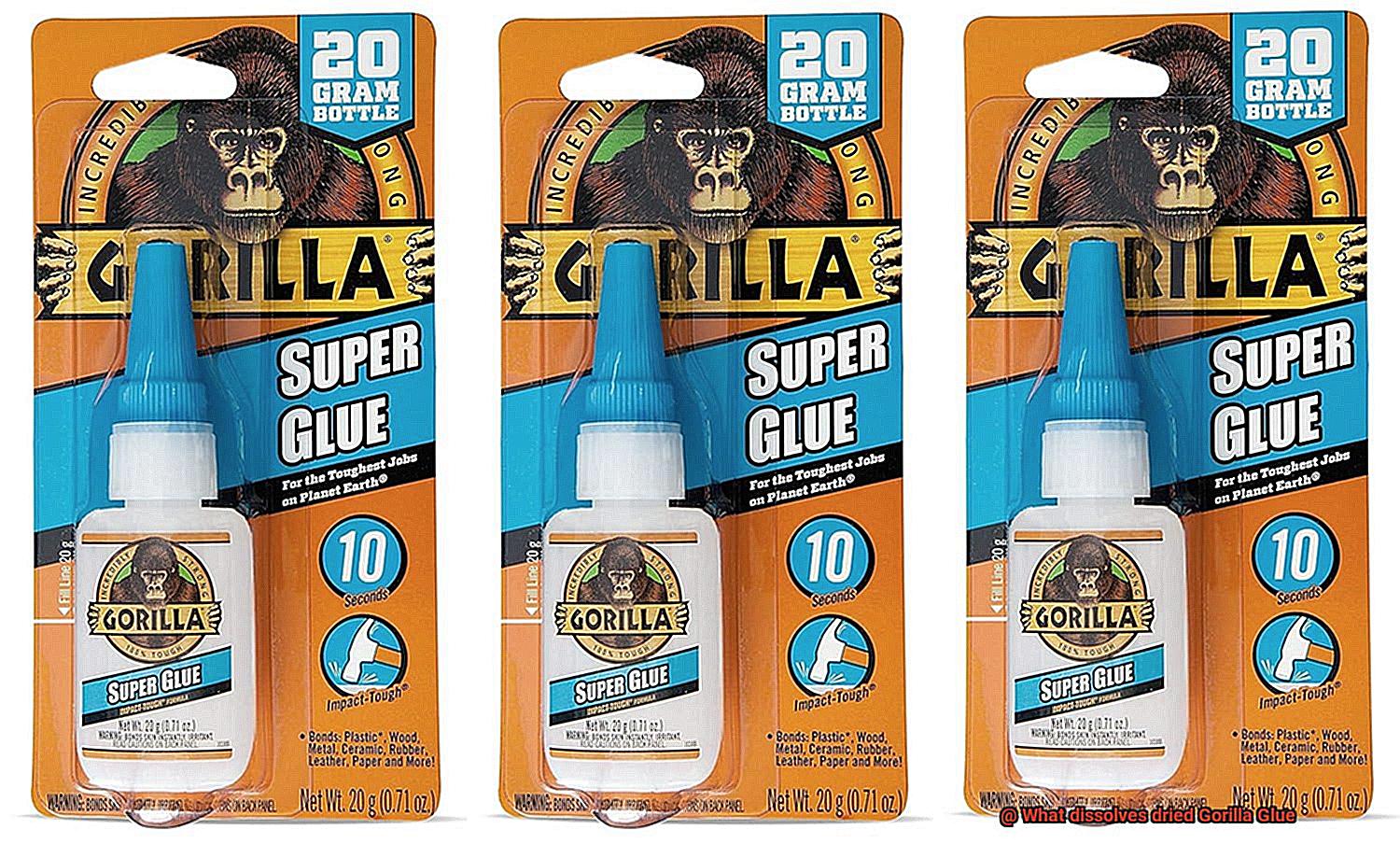
Prepare the Area:
Ensure that the area where the dried Gorilla Glue is located is well-ventilated. This will help minimize any fumes from the isopropyl alcohol. Put on your gloves to protect your skin before proceeding.
Soak the Cloth or Sponge:
Take a clean cloth or sponge and saturate it with isopropyl alcohol. Make sure it’s damp but not dripping excessively.
Gently Rub the Glue:
Using the soaked cloth or sponge, gently rub the dried Gorilla Glue. Apply light pressure and continue rubbing until you notice the glue starting to loosen its grip.
Be Patient:
Removing dried Gorilla Glue may take some time, so exercise patience and continue rubbing until the glue begins to come off easily.
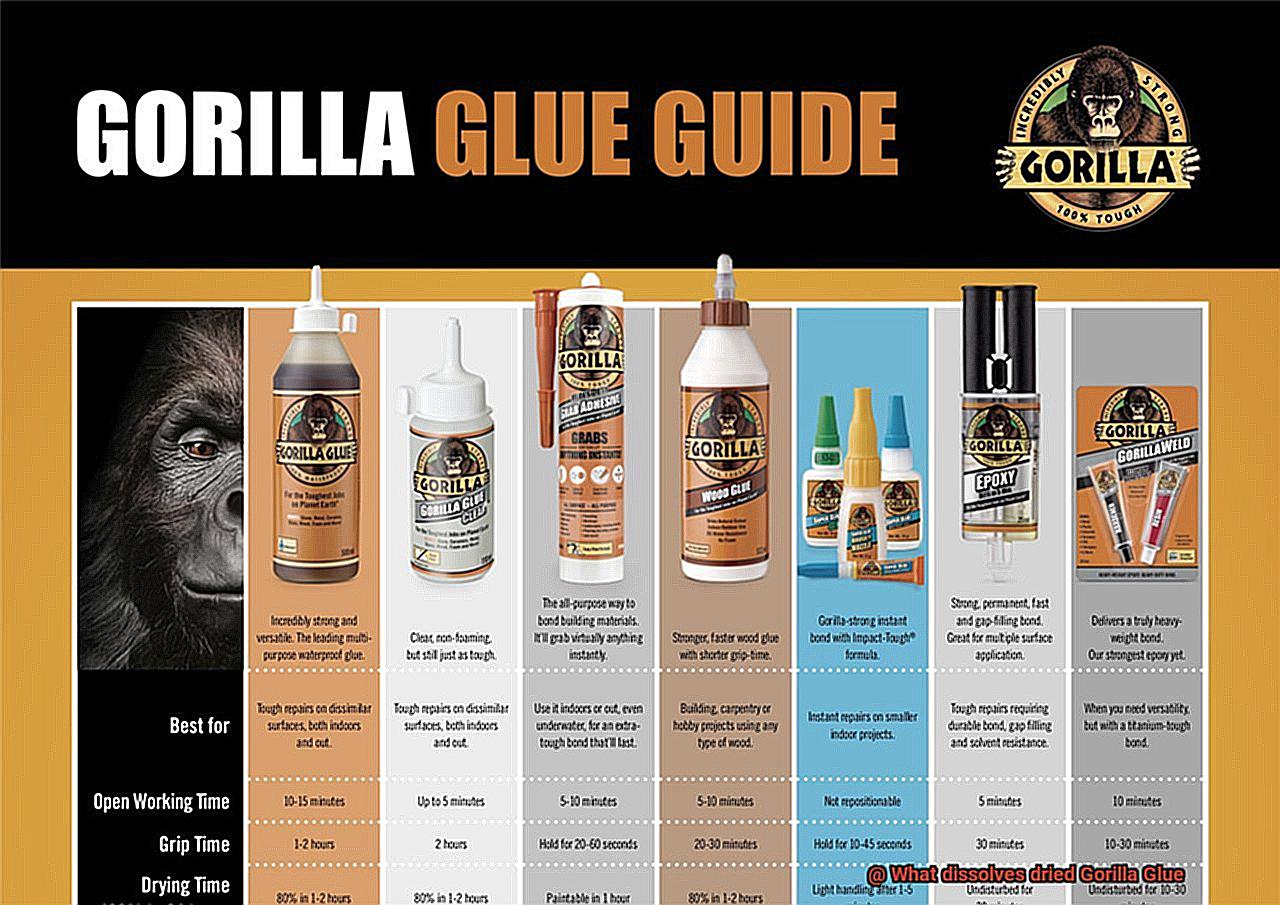
Scrape Away Residue (if necessary):
If the glue doesn’t come off easily, try using a plastic scraper or toothbrush to gently scrape away any remaining dissolved glue. Be cautious not to apply excessive force that could damage the surface underneath.
Clean the Area:
Once you have removed as much of the dissolved Gorilla Glue as possible, use a clean cloth or sponge dipped in warm soapy water to clean the area and remove any residue. Rinse the area with water and dry it thoroughly.
Inspection:
After cleaning, inspect the surface to ensure that all traces of Gorilla Glue have been completely removed. If necessary, repeat the process until the surface is spotless.
How to Dissolve Dried Gorilla Glue with Heat
By applying controlled heat, you can soften the glue and make it easier to remove. However, it’s crucial to exercise caution to prevent any damage or mishaps. In this guide, we’ll explore the step-by-step process of dissolving dried Gorilla Glue with heat, ensuring a successful removal.
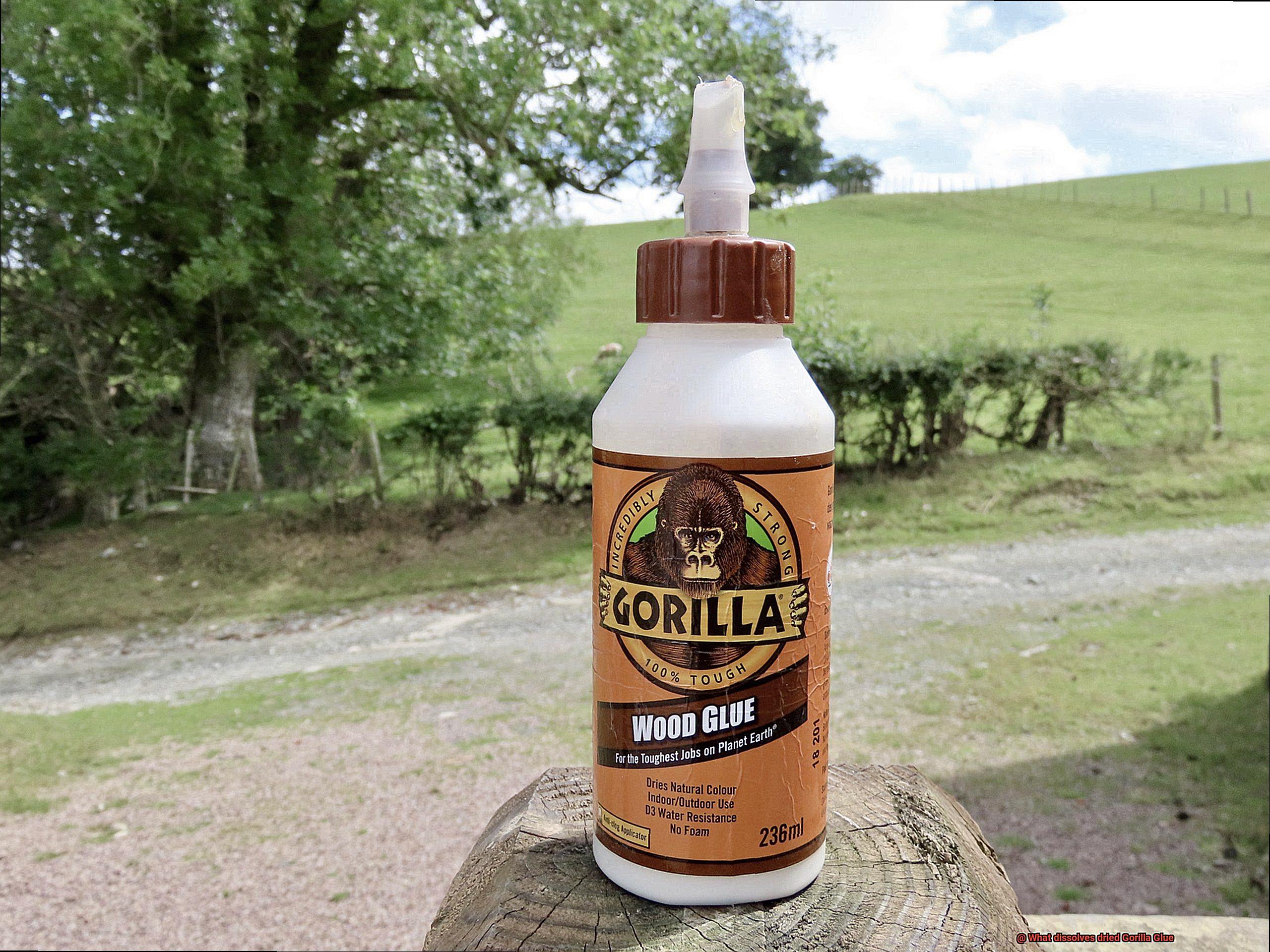
Gather the necessary materials:
Prepare yourself for the task at hand by gathering the essential tools. You’ll need a hairdryer or heat gun as your heat source, protective gloves to keep your hands safe, and a scraper or cloth for removal. And don’t forget proper ventilation in your workspace.
Apply gentle heat to the dried Gorilla Glue:
Position yourself like a skilled craftsman, holding the hairdryer or heat gun about six inches away from the dried glue. Set it to a low or medium temperature to avoid overheating the glue or surface beneath it. Now, start moving the tool back and forth across the glue, ensuring even exposure to heat. As the glue warms up, its once stubborn grip will start to loosen.
Skillfully scrape off the softened glue:
Once the glue reaches a malleable state, seize the moment. Equip your plastic scraper or putty knife and gently scrape away the softened adhesive. Remember, finesse is key here: don’t apply excessive pressure that could harm the underlying surface. If there are still traces of dried Gorilla Glue remaining, continue applying heat while scraping until it’s completely eradicated.
Thoroughly clean up after dissolving:
Now that you’ve triumphed over the Gorilla Glue, it’s time to restore your surface to its former glory. Clean the area meticulously with warm, soapy water to remove any residue or adhesive particles left behind. Ensure the surface is completely dry before proceeding with any new adhesive or finishing touches.
Prioritize safety throughout the process:
While heat can work wonders in dissolving dried Gorilla Glue, it’s crucial to prioritize safety. Don your protective gloves and goggles to shield yourself from potential splatters or hot glue debris. In addition, religiously follow the manufacturer’s instructions for any tools or appliances used. Remember to exercise caution when working near flammable materials or sensitive surfaces to prevent any mishaps.
Adhesive Removers for Dissolving Dried Gorilla Glue
Don’t fret. Armed with the right adhesive remover, you can conquer this sticky situation and restore your surface to its former glory. In this comprehensive guide, we’ll delve into the world of adhesive removers specifically designed to dissolve dried Gorilla Glue. Get ready to bid farewell to stubborn adhesives and say hello to a pristine surface.
The Powerhouse: Acetone
When it comes to adhesive removal, one name stands above the rest – acetone. This potent solvent is readily available and boasts impressive capabilities in dissolving various types of adhesives, including Gorilla Glue. Its versatility allows for use on metals, glass, and plastic surfaces. However, exercise caution as acetone can potentially harm materials like wood or painted surfaces. Always perform a small compatibility test before proceeding with full-scale adhesive removal.
Rubbing Alcohol (Isopropyl Alcohol): The Trusted Ally
Have you ever thought that the rubbing alcohol tucked away in your medicine cabinet could be your secret weapon against dried Gorilla Glue? Isopropyl alcohol, commonly known as rubbing alcohol, possesses the ability to break down the adhesive properties of Gorilla Glue without causing damage to most surfaces. Nevertheless, it’s wise to conduct a compatibility test on an inconspicuous area before applying it more broadly.
Commercial Adhesive Removers: Tailored Solutions
For those seeking convenience and precision, commercial adhesive removers offer targeted solutions for tackling tough adhesives like Gorilla Glue. These specialized products combine powerful solvents and active ingredients to effectively break down and dissolve the glue. With clear instructions at your disposal, using these removers becomes a breeze.
Mastering Success: Follow Instructions Diligently
To achieve optimal results, it is crucial to heed the manufacturer’s instructions when using adhesive removers. This may involve applying the remover to a cloth or sponge and gently rubbing it onto the dried Gorilla Glue. Allow sufficient time for the product to work its magic before wiping away the dissolved adhesive with a clean cloth. Prioritize your safety by wearing gloves and working in a well-ventilated area during the removal process.
Safety Precautions When Dissolving Dried Gorilla Glue
In our previous installment, we explored the mighty arsenal of adhesive removers that can conquer even the most stubborn dried Gorilla Glue. But before you embark on this valiant quest to restore your surfaces to their former glory, it’s time to equip yourself with the necessary safety precautions. After all, true heroes prioritize safety above all else.
So, gather your gear, prepare your battle station, and let’s unveil the world of safety precautions when dissolving dried Gorilla Glue.
Armor Up for Victory:
Before you plunge into battle with adhesive removers, armor yourself like a seasoned warrior. Don protective gear such as gloves, safety goggles, and a mask to shield your skin, eyes, and respiratory system from potential harm caused by the chemicals or fumes lurking within the glue’s grip.
Breathe Freely in a Well-Ventilated Arena:
No hero wants to be engulfed in a cloud of noxious fumes. Ensure you work in a well-ventilated area to minimize inhalation of any potentially harmful vapors released during the dissolving process. Open windows wide or summon the aid of fans to unleash a refreshing breeze that banishes fumes from your path.
The Wise Warrior Hails Instructions:
Every hero knows that knowledge is power. Before embarking on your noble mission to dissolve dried Gorilla Glue, carefully study and respect the instructions and warnings provided by the chemical manufacturer. Each solvent may possess its unique safety guidelines that must be followed for optimal results and your own well-being.
Keep Flames Quelled:
In this fierce battle against tenacious glue, sparks are treacherous foes. Keep all solvents and dissolving agents far from open flames or sparks, for they possess the potential to ignite. Store them in cool, dry sanctuaries, hidden from the sun’s glare and other heat sources, ensuring their potency remains unyielding.
Handle with Tender Care:
When manipulating the solvents, exercise utmost caution to evade any contact with your skin or eyes. Accidental touch? Fear not. Swiftly cleanse the affected area with abundant water and seek medical attention if needed. Remember, true heroes safeguard their own well-being.
Testing Solvents Before Use
In our previous expedition, we armed you with strategies to face the challenge of dried Gorilla Glue. But now, it is time to reveal the secret weapon that will lead you to victory: testing solvents before use.
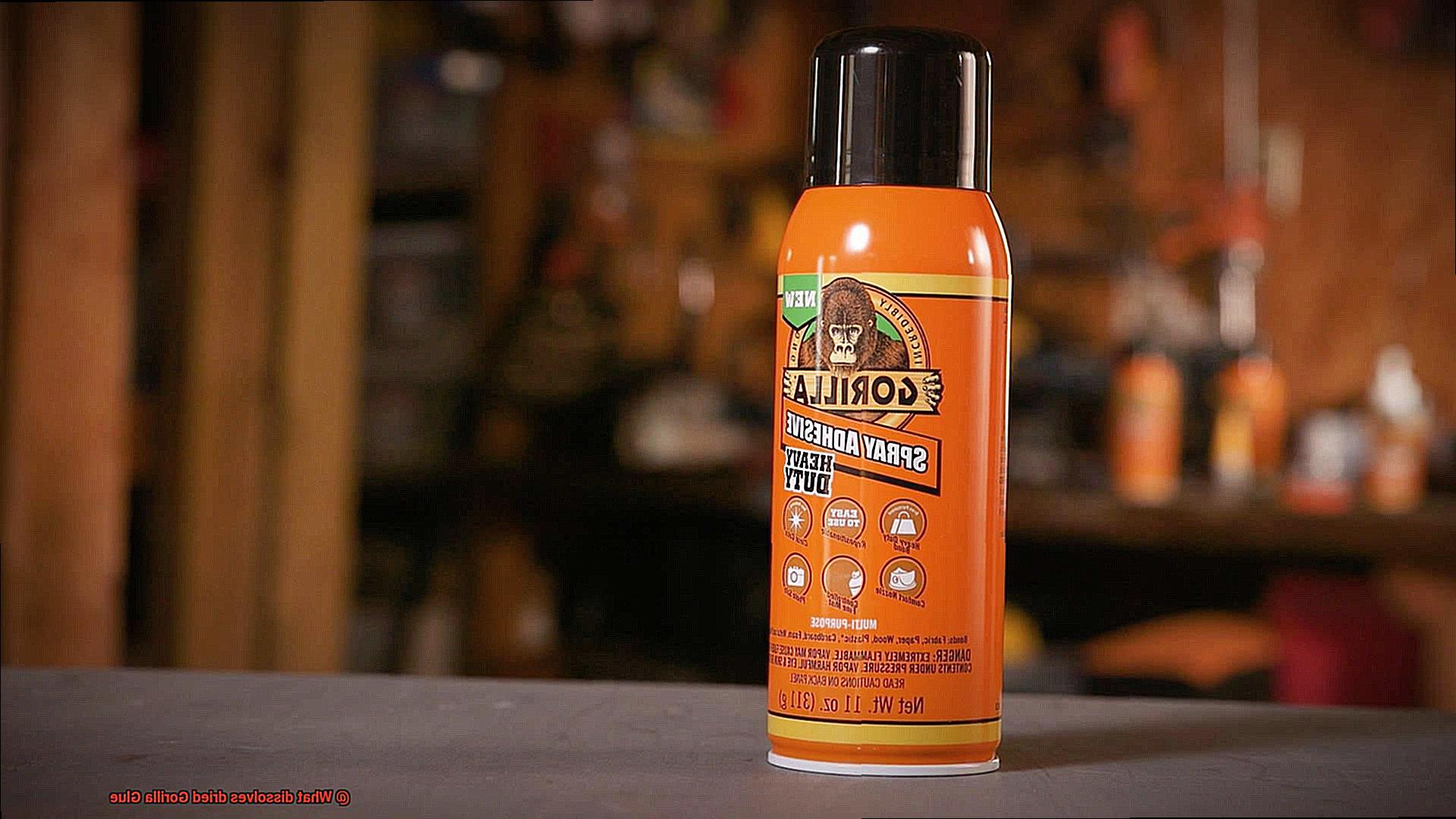
Hear me, fellow warriors, for this step is crucial in your quest to dissolve that indomitable adhesive. So, let us embark on an exhilarating journey into the realm of solvent testing and unravel how it shall pave our path to triumph.
Testing Solvents: A Pivotal Step in Your Battle Plan
Understand this, my comrades: not all solvents possess equal power against the tenacious grip of Gorilla Glue. That is why it becomes paramount to test these solvents before setting them loose upon your cherished surfaces. This seemingly simple yet essential step shall ensure that you avoid any potential damage or futile attempts at glue removal. Let us delve into the sub-topics below, arming ourselves with knowledge as we march forth.
Acetone: The Ally of Warriors
Behold, for acetone stands as a trusted comrade in this war – a common constituent found within nail polish removers. Acetone has earned renown for its prowess in dissolving dried Gorilla Glue. But heed this, my fellow warriors: even with this powerful ally at your side, exercise caution. Apply a small amount of acetone on an inconspicuous area, ensuring it causes no harm or discoloration before proceeding.
Isopropyl Alcohol, Mineral Spirits, and Denatured Alcohol: The Triumvirate of Potential
These solvents bear the potential to vanquish dried Gorilla Glue as well. Yet, tread the same path as with acetone. Test them on a small area first, verifying their safety for use. Remember, my comrades, patience holds great virtue. Allow the solvent to linger on the glue for an extended period or repeat the application process if required.
Common Mistakes to Avoid when Dissolving Dried Gorilla Glue
As we embark on this perilous journey, it is crucial to equip ourselves with knowledge about the mistakes that can hinder our triumph and potentially harm our cherished surfaces. Join me as we explore the secrets to success and safeguard our precious belongings.
The Aggressive Warrior:
Imagine yourself locked in combat with stubborn dried Gorilla Glue. Frustration mounts, and the temptation to exert excessive force or scrape aggressively becomes irresistible. But beware, my comrades. Such a hasty approach can inflict irreparable scratches and gouges upon your beloved surface. The key to victory lies in patience – approach the task with gentleness, meticulously removing the glue without causing any harm.
The Harsh Chemical Conundrum:
In our relentless pursuit of swift dissolution, the allure of harsh and abrasive chemicals may tempt us. However, heed my warning. Unleashing such substances can result in discolored or deteriorated materials. To avoid this catastrophe, select a solvent that is safe for your specific surface and conduct a small-scale test in an inconspicuous area before proceeding further.
The Fiery Temptation:
Ah, the seductive power of heat. It possesses the capability to soften dried Gorilla Glue, but tread cautiously, my friends. Excessive heat can spell disaster for certain materials. To maintain harmony, adhere strictly to the temperature limits advised by the manufacturer and vigilantly monitor the process to prevent any unintended consequences.
The Impatient Knight:
Time is indeed of the essence, yet haste can prove fatal in this battle. Dried Gorilla Glue requires adequate time for solvents to penetrate and dissolve it completely. Exercise unwavering patience, fellow warriors, allowing sufficient time for the solvent to work its magic effectively. Remember, victory favors those who wait.
The Unprotected Hero:
In this grand odyssey, the shield of safety must never be neglected. Failing to don protective gear when handling solvents or chemicals is a grave mistake. Beware the lurking dangers of harmful fumes and skin irritations. Equip yourselves valiantly with gloves, goggles, and masks, for only then can we march forth unharmed.
Conclusion
When it comes to tackling the stubborn grip of dried Gorilla Glue, you need a solution that packs a punch.
Luckily, there are a few substances that can dissolve this adhesive nightmare and free your surfaces from its tenacious hold. From acetone to isopropyl alcohol, these powerful solvents have the ability to break down and loosen even the most hardened Gorilla Glue.
So, whether you’re dealing with an accidental spill or trying to remove an old glue residue, don’t fret – there’s a solution out there that will dissolve dried Gorilla Glue and restore your surfaces to their former glory.

